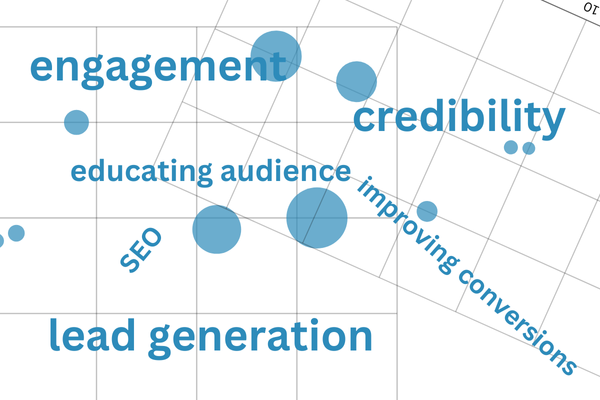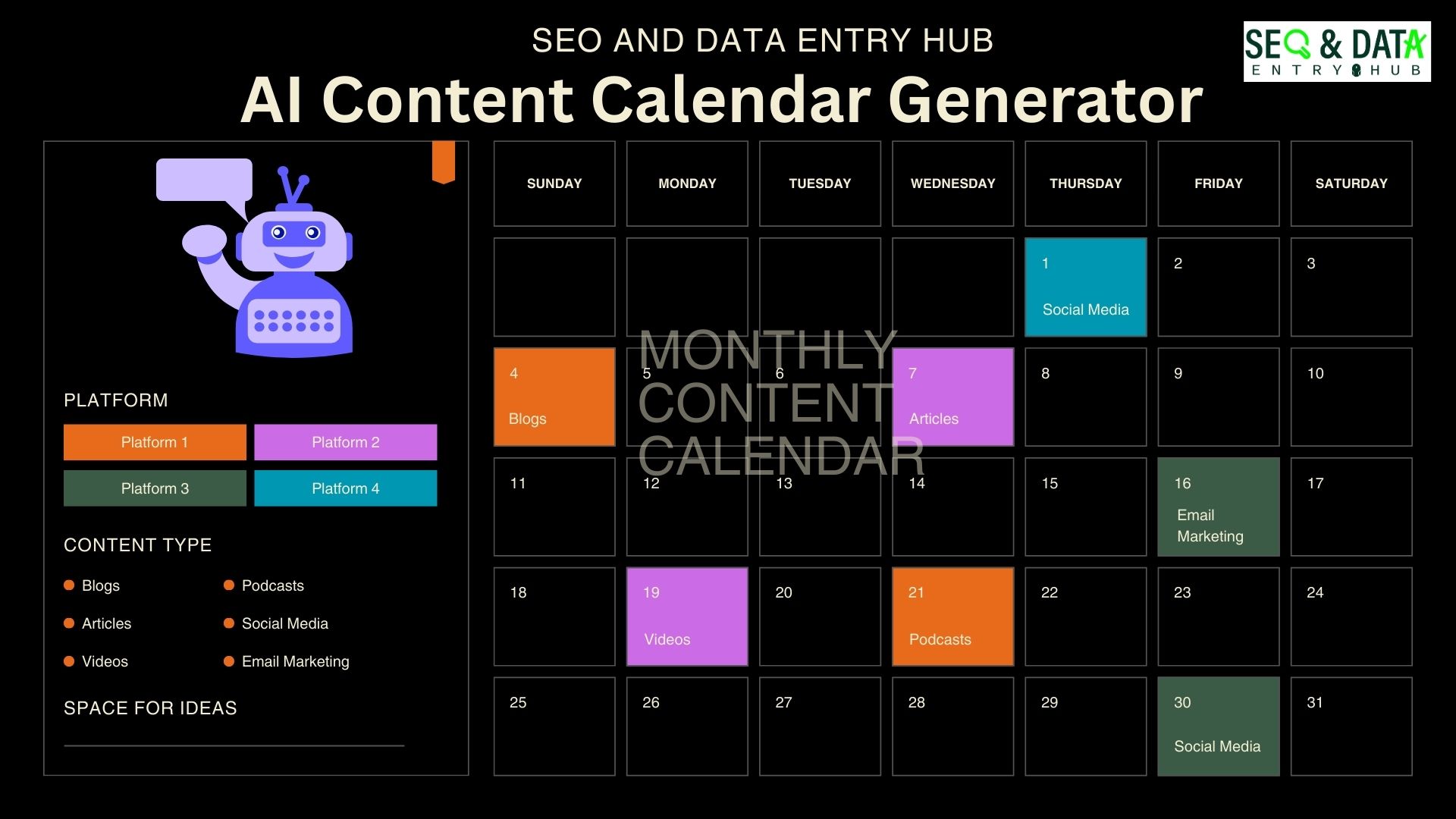
(Table of Content) If you have time, please read the entire article or click on your desired section
ToggleIntroduction
Content production is more than just writing or filming; it’s the essential process of creating messages that establish engagement with your target audience.
Imagine this—you’ve spent hours brainstorming ideas, researching topics, and jotting down plans, but the process feels overwhelming when it comes to producing quality content.
You’re not alone! Whether you’re a seasoned content creator or a small business owner, understanding the art and science of content production can seem like navigating a maze.
In today’s digital landscape, a well-thought-out content production process can differentiate between reaching the right people or getting lost in the crowd.
For example, when I started my first blog—it was chaotic. I had many ideas in my brain, but I didn’t know how to organize or produce content effectively for my website.
Over time, I realized that using tools like a content calendar and focusing on clear content strategies made all the difference.
In this blog, I’ll break down everything you need to know about content production, from understanding its importance to mastering the stages involved. Ready to dive in? Let’s start unraveling the process!

Why is Content Production Important?
In the world of digital marketing, content production is like the fuel that powers your online presence.

But why is it so important?
| credibility | engagement | SEO |
| lead generation | educating audience | improving conversions |
First, content establishes credibility. Imagine you’re searching for a solution to a problem, and you find a website with detailed, well-researched blog posts.
You’d trust them, right?
That’s the power of creating valuable content—it builds trust and positions you as an expert.
Second, content drives engagement. Whether it’s a blog post, a social media campaign, or a video, content keeps your audience interested and coming back for more.
For example, sharing a relatable story or creating a checklist helps readers connect with you on a deeper level.
Third, it’s critical for SEO. Search engines love fresh, relevant content. You increase your chances of ranking higher and attracting organic traffic by producing optimized pieces with keywords like content creation processes or content production tools.
Lastly, content production supports your brand’s goals. Whether your focus is on lead generation, educating your audience, or improving conversions, having a solid content strategy ensures you hit those targets.
To sum up, skipping content production is like opening a shop but not telling anyone about it. By investing in creating impactful content, you’re opening doors to opportunities, building relationships, and driving success.

Why does content production matter so much in today’s digital world?
It’s more than just creating blog posts or sharing updates on social media—it’s the backbone of how businesses, creators, and brands communicate with their audience. Let’s break it down:
Establishes Authority
Think about it—when you consistently produce high-quality content that answers questions, educates readers, or offers solutions, people see you as a trusted source.
For example, if you write a detailed guide on the content production process, readers will bookmark it and return it whenever they need clarity.
Drives Visibility
A well-executed content strategy that includes optimized keywords like content creation tools or social media content production can increase your reach.
Content drives organic traffic from search engines, social platforms, and even word-of-mouth sharing. It’s your way of standing out in a crowded marketplace.
Engages and Retains Audiences
Content builds relationships. Whether it’s an entertaining story or a solution-oriented article, engaging content keeps readers coming back for more.
For instance, a step-by-step checklist on creating a content calendar could resonate with marketers struggling to organize their campaigns.
Supports Business Goals
Every business has goals—more sales, better leads, or enhanced customer loyalty. By aligning your content production efforts with these goals, you can guide your audience through the buyer’s journey effectively.
For example, a well-crafted branded content video can convert leads into loyal customers.
In short, content production isn’t just important—it’s essential. Without it, you risk losing relevance, authority, and visibility. Remember, every piece of content you produce is an opportunity to connect, influence, and grow.

Producing high-quality content is like preparing a delicious meal—you need the right ingredients, a recipe, and proper execution. The content production process involves several key stages that help bring your ideas to life. Let’s explore these stages step by step.
1. Ideation and Research
Generating ideas is the foundation of content production. It’s where creativity meets strategy.
- Identify Goals: What do you want the content to achieve? Is it for brand awareness, conversions, or customer education?
- Audience Analysis: Understand your target audience—their preferences, pain points, and interests.
- Keyword Research: Tools like SEMrush or Google Trends can help you identify high-volume, low-competition keywords, such as “content production process” or “effective content strategy”.
- Competitor Analysis: Look at what’s working for others in your niche and find ways to do it better.
For example, when I worked on “Content Production: 5 Proven Steps for Writers & Marketers”, I began with an extensive keyword analysis to ensure my article would stand out in search rankings.
2. Planning and Strategy
Planning is essential to ensure that your content aligns with your brand goals and audience needs.
- Content Calendar: Create a content calendar to organize ideas and deadlines.
- Format Selection: Decide the type of content—blog posts, videos, infographics, or social media updates.
- Outline Creation: Draft a structure for your content to maintain flow and coherence.
Imagine preparing a blog on “9 Tips for Great Content Writing Strategies”. Without an outline, you might miss key points or lose focus.
3. Creation
This is where the magic happens! Transform your ideas into tangible content.
- Drafting: Write the first draft with the focus keyword naturally integrated. Avoid keyword stuffing, but ensure keywords like “content production tools” or “content creation” appear seamlessly.
- Visual Elements: Add relevant images, graphics, or videos to make the content visually appealing.
- Collaborate: Work with a team of content creators or freelancers to refine your content.
For example, when creating content for “How to Start a Content Creation Agency“, I included actionable steps and visuals to keep readers engaged.
4. Editing and Optimization
Editing is crucial for improving clarity, tone, and flow.
- Proofreading: Check for grammatical errors, typos, and awkward sentences.
- SEO Optimization: Include search-engine-optimized headings, meta descriptions, and tags. Use tools like Yoast or Rank Math to guide you.
- Readability: Ensure a mix of short and long sentences for better readability.
For instance, in “SEO Content Writing Services: 7 Proven Ways to Ranking Fast“, I focused on SEO techniques to optimize the article for better rankings.
5. Distribution and Promotion
Your content won’t deliver results if it doesn’t reach your audience.
- Platforms: Share content on your website, social media, and email newsletters.
- Repurposing: Transform blog posts into videos or infographics to reach different audiences.
- Engagement: Encourage comments and shares by asking questions or inviting feedback.
For instance, after publishing “Flexible Remote Jobs for Moms”, I repurposed parts of the blog into Instagram posts to target a wider audience.
6. Evaluation and Iteration
Finally, measure the success of your content to refine your strategy.
- Metrics to Track: Focus on metrics like traffic, engagement, and conversions.
- Feedback: Use comments or surveys to gather insights from readers.
- Continuous Improvement: Update old content with new information or better visuals.
For example, I revisited “Content Producers: 7 Secrets to Boost Your Digital Success” a few months after its release to ensure its relevance.
Each stage of the content production process is interconnected, and skipping one could derail your efforts. By following these steps, you can produce content that not only resonates with your audience but also drives measurable results.
Tools for Content Production
Content production can feel overwhelming without the right tools at your disposal.
Whether you are an expert content creator or just starting out, using the necessary tools can ease your workflow. Effective tools can improve productivity and enhance the quality of your work.
Here’s a breakdown of must-have content production tools across various process stages.

Content Planning and Strategy Tools
Good content starts with a solid plan. These tools help you brainstorm ideas, research keywords, and organize your workflow.
- SEMrush: Ideal for conducting keyword research, tracking competitors, and optimizing for search engine optimization (SEO).
- Google Trends: Helps identify trending topics to keep your content relevant and timely.
- Trello/Asana: Excellent tools for managing your content calendar and assigning tasks to team members.
Example: When I planned “7 Essential Types of Content Writing with Examples“, I used SEMrush to identify relevant keywords like “types of content writing” and Google Trends to ensure the topic had consistent search interest.
Content Creation Tools
The creation stage demands tools that enable smooth writing, designing, and formatting.
- Grammarly: Ensures your content is free from grammar and spelling errors, maintaining a professional tone.
- Canva: Perfect for designing visuals like infographics, banners, and social media posts.
- Google Docs: A simple yet powerful tool for collaborative writing and editing.
- Hemingway App: Helps you simplify complex sentences, making your content more readable and engaging.
Example: While working on “Content Producers: 7 Secrets to Boost Your Digital Success“, I used Grammarly to polish my writing and Canva to create a shareable infographic summarizing the article’s key points.
SEO Optimization Tools
No matter how great your content is, it won’t perform well if it’s not optimized for search engines.
- Yoast SEO (for WordPress): Guides you in optimizing blog posts for readability and SEO.
- AnswerThePublic is a tool for discovering questions your audience is asking, allowing you to address their pain points directly.
- Moz: Useful for tracking keyword rankings, backlinks, and overall domain authority.
Pro Tip: For my article “SEO Content Writing Services: 7 Proven Ways to Ranking Fast,” I relied on Yoast SEO to ensure it met all the right criteria for on-page optimization.
Content Design and Multimedia Tools
Visuals and multimedia are essential to keep readers engaged.
- Pexels/Unsplash: Free stock photo platforms for finding high-quality images.
- Pictory.ai: A tool I often use to convert written content into engaging videos for YouTube.
- Audacity: A free tool for recording and editing podcasts or voiceovers.
- Lumen5: Simplifies turning blog posts into video content with text overlays and animations.
Example: I used Pictory.ai to create a video version of “Flexible Remote Jobs Made Easy: 17 Key Steps to Success“, which made the content accessible to a broader audience.
Collaboration and Communication Tools
Teamwork plays a crucial role in content production, and efficient communication ensures everyone stays on the same page.
- Slack: A messaging app for quick communication and file sharing.
- Notion: A versatile tool for project management, note-taking, and document collaboration.
- Zoom: Essential for virtual meetings, brainstorming sessions, and interviews.
Pro Tip: While working on “Content Production: 5 Proven Steps for Writers & Marketers,” my team used Slack to share ideas and Notion to keep track of tasks and deadlines.
Analytics and Performance Tools
After publishing your content, tracking its performance is vital to understand what works and what needs improvement.
- Google Analytics: Offers detailed insights into website traffic, audience behavior, and engagement metrics.
- BuzzSumo: Helps analyze how your content is performing on social media and which topics are trending.
- Hotjar: Provides heat maps and session recordings to show how users interact with your website.
Example: I used Google Analytics to monitor the performance of “9 Tips of Great Content Writing Strategies (With Checklist)“ and adjusted my future strategy based on audience behavior.
Table: Tools Categorized by Purpose
| Category | Recommended Tools |
| Content Planning | SEMrush, Google Trends, Trello |
| Content Creation | Grammarly, Canva, Google Docs |
| SEO Optimization | Yoast SEO, AnswerThePublic, Moz |
| Design & Multimedia | Pexels, Pictory.ai, Audacity |
| Collaboration | Slack, Notion, Zoom |
| Analytics & Performance | Google Analytics, BuzzSumo, Hotjar |
Choosing the right tools can make all the difference in streamlining your content production process.
Whether you’re crafting blog posts, creating visuals, or analyzing data, these tools empower you to produce quality content efficiently and effectively.
Would you like to explore specific tools in more detail, or do you need examples for your niche? Let me know!
Challenges in Content Production
Creating content sounds simple on the surface, but anyone who has dived into the process knows it’s far from straightforward.
Every stage comes with its own hurdles, and overcoming them is key to producing high-quality content. Let’s explore some common challenges in content production and practical ways to address them.
1. Lack of Clear Strategy
One of the biggest obstacles is starting without a defined plan. Without a strategy, you risk wasting time and resources on content that doesn’t resonate with your audience or align with your goals.
Solution:
- Develop a content strategy that outlines your goals, target audience, and distribution channels.
- Use a content calendar to stay organized and consistent.
- Incorporate data-driven decisions to guide your strategy.
For example, while working on “SEO Content Writing Services: 7 Proven Ways to Ranking Fast“, I initially struggled to find the right angle. Creating a clear strategy helped me identify what readers were searching for and how to address their needs effectively.
2. Time Constraints
Creating engaging content takes time, from brainstorming ideas to writing, editing, and distributing. However, tight deadlines can compromise quality.
Solution:
- Prioritize tasks by focusing on high-impact content first.
- Delegate tasks to a content production team or freelancers.
- Use content production tools like Grammarly, Canva, or SEMrush to speed up the process.
For instance, when I worked on “9 Tips of Great Content Writing Strategies (With Checklist)“, a looming deadline forced me to divide tasks among team members. This approach ensured that the content was delivered on time without sacrificing quality.
3. Maintaining Consistency
Producing content regularly while keeping it engaging and relevant can be exhausting, especially for small teams.
Solution:
- Batch-create content: Dedicate specific days to brainstorming, writing, and editing.
- Repurpose existing content: Turn blog posts into infographics, videos, or social media updates.
- Monitor trends: Use tools like Google Trends to identify topics your audience is interested in.
For example, I repurposed parts of “The Complete Guide to Content Production” into smaller pieces for social media, which not only saved time but also kept my audience engaged.
4. SEO Challenges
Ranking high on search engines requires a balance between quality content and SEO optimization. Overuse of keywords (keyword stuffing) can lead to penalties, while underuse may result in poor rankings.
Solution:
- Optimize for semantic keywords like “content strategy”, “target audience”, and “content marketing” naturally.
- Use headings and subheadings to include focus keywords without overloading.
- Regularly update content to keep it relevant and boost rankings.
In my article “Flexible Remote Jobs Made Easy: 17 Key Steps to Success“, I carefully integrated keywords like “remote jobs” while maintaining a conversational tone, which improved its search engine visibility.
5. Content Fatigue
Sometimes, it feels like everything has already been written, leading to creative burnout. How do you create something unique when the market is saturated?
Solution:
- Add your personal perspective: Share unique experiences or case studies.
- Experiment with different content formats like podcasts or interviews.
- Focus on solving specific problems your audience faces.
For instance, in “Content Producers: 7 Secrets to Boost Your Digital Success”, I included real-world examples and actionable tips, making the content more relatable and valuable.
6. Resource Limitations
Small businesses and startups often face resource constraints, such as limited budgets or lack of skilled team members.
Solution:
- Invest in affordable content production tools to automate repetitive tasks.
- Focus on quality over quantity by producing fewer, more impactful pieces of content.
- Collaborate with freelancers or content agencies to bridge the skills gap.
When writing “How to Start a Content Creation Agency: Proven 6 Steps”, I faced resource challenges but overcame them by collaborating with experienced contributors.
7. Adapting to Changing Trends
The digital landscape evolves rapidly, and failing to keep up can make your content obsolete.
Solution:
- Stay updated with industry news and algorithm changes.
- Regularly audit your content and update outdated information.
- Experiment with trending formats like short videos or carousel posts.
For example, I updated “Ultimate Guide for the Best Content Marketing Agencies – 2025” to reflect the latest trends in the marketing industry.
While content production comes with its challenges, each obstacle is an opportunity to improve your process and create better content.
By addressing these challenges head-on, you can build a sustainable workflow that delivers consistent results.

FAQs About Content Production
- What do you mean by content production?
Content production refers to the process of creating, designing, editing, and publishing content in various formats, such as blog posts, videos, infographics, and social media updates. It involves planning, execution, and distribution to target audiences. - Why is content production important?
Content production plays a key role in engaging your audience, building brand authority, and driving conversions. Quality content helps improve search engine rankings, attracts potential customers, and keeps existing ones loyal to your brand. - What are the stages of content production?
The stages include:
- Planning: Defining goals, target audience, and content strategy.
- Creation: Writing, designing, or recording content.
- Optimization: Ensuring content is search-engine-friendly.
- Distribution: Sharing across platforms like blogs, social media, or email.
- Analysis: Measuring performance to refine future content.
- What tools are essential for content production?
Tools like SEMrush for keyword research, Canva for designing, Grammarly for editing, and Google Analytics for performance tracking are essential to streamline the process. - Who is involved in the content production process?
A content production team often includes content writers, designers, editors, SEO specialists, and marketers. Freelancers and agencies are also common choices for outsourcing specific tasks. - Can content production be automated?
Yes, many aspects of content production can be automated using tools like Hootsuite for scheduling posts, AI-based writing tools like ChatGPT, and video creation platforms such as Pictory.ai. However, human creativity and strategy remain irreplaceable. - How do I know if my content is effective?
Tracking metrics such as page views, bounce rates, engagement, and conversions through Google Analytics and social media insights will give you a clear picture of your content’s effectiveness.
Conclusion: Creating Impactful Content Production Strategies
Content production is the backbone of any successful content marketing strategy. By planning carefully, using the right tools, and aligning content with your audience’s needs, you can create impactful and engaging content that drives results.
Remember, the quality of your content reflects the quality of your brand. Investing time and effort into producing high-quality content isn’t just an option—it’s a necessity in today’s competitive digital landscape.
Call to Action (CTA):
Are you ready to take your content production to the next level? Whether you’re a content creator or a business owner, my comprehensive guide, “Content Production: 5 Proven Steps for Writers & Marketers,” has everything you need to succeed.
Let’s connect! Share your challenges or success stories in the comments below or reach out to discuss how we can elevate your content strategy together!
Would you like me to refine this further or add more specific examples? 😊
Author’s Bio
I hold a Master’s degree in History from the University of Dhaka, Bangladesh, and in Anthropology from the University of Heidelberg, Germany. With years of research experience in health, I have transitioned into a passionate Content Writer, AI Content Editor, SEO Specialist, and Data Operator.
Since 2012, I have served Fabrics World USA as a Content Creator and SEO Specialist. My goal is to ensure my clients are 100% satisfied, both in profitability and company growth. Combining my education and experience, I prioritize benefiting my customers.
My research tenure at Heidelberg University and BRAC University enhanced my analytical skills and understanding of human behavior, which I continuously apply to my work.
You can Visit Our Social Pages:
✅ LinkedIn:
https://www.linkedin.com/in/salauddin-writer-seo-dataentry/
✅Facebook:
https://www.facebook.com/profile.php?id=61557149480263
✅ Instagram:
https://www.instagram.com/seoanddataentry/
✅ Twitter:
https://x.com/SalauddinB1980/
✅ Pinterest:
Link: https://www.pinterest.com/seoanddataentryhub/
✅ YouTube:
URL: https://www.youtube.com/channel/UCCP5sGmyvOw4fuyDkZVO_Sg
✅ Medium: https://medium.com/@SalauddinSEOandDataEntryhub
To get our services:
🚀 https://www.fiverr.com/data_entry_80
🚀 Google Map Scraping: https://www.fiverr.com/s/rEAB3dD
🚀 SEO and Content Writing: https://www.upwork.com/freelancers/~0178b287b0e055623e?mp_source=share















